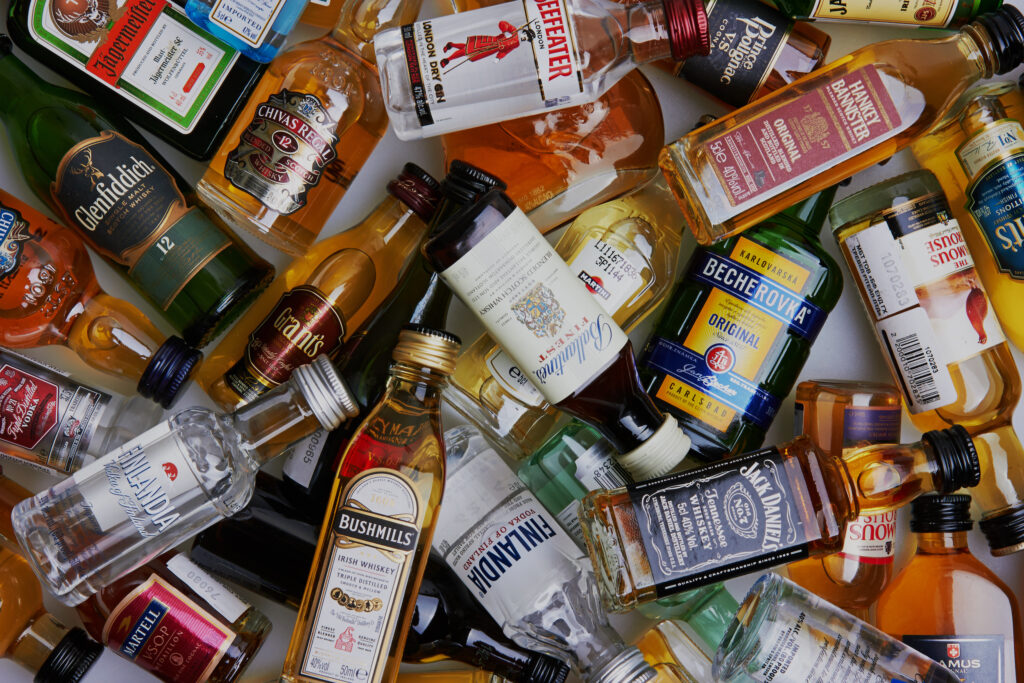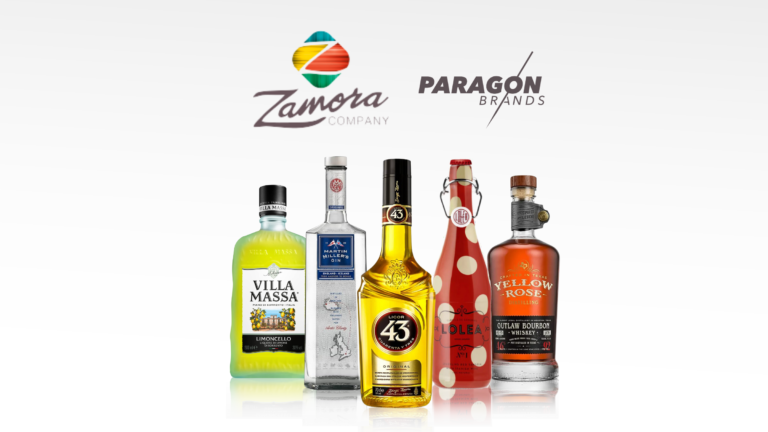The duty stamps scheme was misconceived and pointless and has been a burden on our legitimate distilling industry since its inception, writes Alan Powell, specialist excise duties consultant, for The Distillers Journal.
The spirits duty stamps scheme is reported to be a burden upon the spirits industry and in particular upon the artisan and smaller spirits producers and packers. A frequent reference to industry trade bodies is how traders should deal with duty stamps legislation concerning re-filled stamped bottles/containers by the producer or where the producer takes a large container of spirits to re-fill bottles at on-trade retail outlets etc.
On behalf of the industry, I have written to HMRC Policy officials several times using official channels to discuss re-evaluation of the duty stamps scheme and in particular in the context of re-use of empty bottles that will be re-filled with duty-paid spirits and bearing in mind the environmental imperative.
At the date of writing, no meaningful response has been forthcoming. But in any event, we really need to look at the background to the duty stamps scheme and why it ought never have been implemented. It is a monumental cynical deception played upon the industry by civil servants who miscalculated spirits duty fraud but rather than acknowledge they had erred, ploughed on with measures that have placed immense and pointless burdens upon the legitimate trade.
Alcohol duty fraud
Alcohol duty fraud has been primarily in inward diversion of large volumes of popular (and relatively inexpensive) British-produced brands of lager. The fraud was subject to a thorough report by the All-Party Parliamentary Beer Group in 2012 and disclosures by HMRC to the National Audit Office and Public Accounts Committee.
Moreover, as in particular, and in support of the analysis above, we refer to a 2019 court of appeal case “Seabrook Warehousing Ltd”, in which the following extract is highly significant and relevant:
“LORD JUSTICE VOS: What is the evidence? In a nutshell is it that experience shows that these things have to be regulated because there are a lot of foreign fraudsters around trading in alcohol?
MR KINNEAR (QC for HMRC): So, very briefly, the way in which the inward diversion fraud works is that if there is a lorry in Calais it has to have an ARC document, which is to be logged on to the system. If the lorry gets to Dover and it is not checked by the Customs it drives through, it parks up somewhere, it is has not had to show its ARC document and what happens is another lorry, carrying exactly the same load with a copy, or with the same ARC number is sitting in Calais, and it comes across. If it is not stopped there will be another one and another one. Until a lorry is stopped carrying that particular ARC ‘mirror loads’, as they are described, can continue to come into the country.
LORD JUSTICE VOS: And what is the position in other Member States?
MR KINNEAR (QC for HMRC) Nothing like that which it is in the United Kingdom, simply because the duty is so high in the United Kingdom it is worth the risk. It generally tends to be lower value goods, lower value wines and beers that are smuggled because the cost of a lorry of expensive spirits, for instance, would be so great that the return in relation to the duty would not be worth the risk of losing a lorry, because the (respective rate of) duty on a bottle of wine, or a bottle of whisky is the same, whether it is a £3 bottle or a £3,000 bottle (ie excluding the duty).
LORD JUSTICE VOS: So, it is cheap alcohol…” (Emphasis added)
This is exactly what HMRC has been telling the industry, the PAC, the APPBG and the communication media for years about the nature of the fraud.
In fact, spirits excise duty fraud dissipated after HMCE’s Investigation Division’s own orchestration of illegal covert outward diversion frauds between 1994-1998 was stopped but by then had led to revenue loss of hundreds of millions of pounds.
HMCE in Policy had believed the fraud to be endemic in the then paper-based control system but was contained to a specific operation. After it had been closed, there was no spirits fraud but by then HMCE had put in train the WOWGR registered owners’ provisions (and lobbied the EU Member States for what would become the EMCS).
Even worse, in the knowledge that the real estimates for spirits fraud were no longer the £500 – £600 million per year but statistically practically nil, HMCE continued with the spirits duty stamps scheme which was a cynical deception upon the industry.
This year, I requested to be provided with sight of the full sign-off chain from HMRC under the Freedom of Information Act. On 4 August I received the reply below:
Freedom of Information Act 2000 (FOIA)
Thank you for your request, which was received on 4 July, for the following information:
“The full sign-off chain with HMCE and HMT to ministers that the duty stamp scheme implemented, including the endorsement by the HMCE Duty Stamps Unit that it was in accordance with the Civil Service Code of conduct.”
Our response
As was usual at that time, at least one policy casework paper file will have been created and used for ongoing policy development over the period 2001 (when scheme first considered) to 2006 and maybe beyond.
We know these files along with numerous others, have been reviewed and many destroyed as we prepare for moves to new regional centres. Further, having also examined residual paper-based records relating to policy work held at a physical storage facility, we can confirm none relate to the information you seek.
We therefore believe we no longer hold the information requested: our standard retention period for records we hold is 6 years plus current, otherwise known as 6 years + 1. This is defined as 6 years after the last entry in a record followed by first review or destruction to be carried out in the additional current (+ 1) accounting year.
We can only retain records beyond our default retention period if their retention can be justified for statutory, regulatory, legal or security reasons, or for their historic value. We have not been able to confirm any such reasons applied to the information you require, which means it’s likely to have been destroyed.
So, it is very convenient for HMRC that there is said to be no available trail of evidence. We can look at the empirical evidence to disprove, as far as anything can, that the duty stamps scheme was ever necessary.
Background
The duty stamps scheme was said by HMCE/HMRC to be necessary to counter spirits duty fraud that was prevalent in 2001 and presumably up to 2006. In fact (and it is a fact), there was no spirits duty fraud post 1998 that was of any statistical significance. Despite this, and HMCE (as was) being aware (or ought to have been aware) of this fact, the duty stamps scheme was made law in February 2006.
The spirits frauds 1994-98
The full scale of the frauds actually incited, nurtured and orchestrated by HMCE’s Investigation Division between 1994 -98 was not widely known until the events at Liverpool Crown Court in November 2002 and HMCE’s case collapsing with the disclosures that the frauds were in fact entrapment and had been closed by 1998. This debacle was the main catalyst (if not to say cause) of HMCE being merged with the Inland Revenue in 2005). But other government agencies had been deceived prior to 2002; if we refer to the NAO/A&CG’s Report into duty fraud of 19 July 2001, it is stated in the executive summary:
A key approach of the National Investigation Service to tackle diversion frauds was to protect the revenue by identifying the principals behind the fraud and collecting sufficient evidence to secure their conviction. The main method of achieving this was identifying suspect consignments and allowing fraudsters to move goods from excise warehouses whilst under observation (known as “letting loads run”). Selected consignments would be followed and when enough evidence was obtained the perpetrators would be arrested. An unavoidable consequence of this method was that arrears of duty would build up during the course of the investigation. The National Investigation Service considered that “letting loads run” was justifiable if it led to successful prosecutions and arrears of duty were recovered through confiscation orders from the Courts.
The truth, when it came out, is that loads weren’t just being let to run; HMCE’s Investigation Division (ID) were encouraging more parties to participate in the fraud (the ID fraud). This was reported mainly at an eponymous warehouse, but the ID were encouraging other warehousekeepers to participate in the fraud. Another former warehousekeeper has provided evidence in an email to me of 12 August 2019 headed working with HMRC on running scams of his being encouraged by HMCE to participate in the entrapment and other criminal activities at his warehouse.
He says:
I was contacted by a fellow who wanted me to receive similar products to export. He said, ‘I don’t want to mess about with bits and bats, I want to do a load a day.’ I explained that our movement guarantee was not big enough to which he said: ‘Sort out getting it increased so we can do the business, your cut will come in brown envelopes!’
I reported this to HMRC’s Investigation Division. Their response was for me to go “along with him. We’ll arrest both of you, but you’ll just be let go….”
I… didn’t pursue it any further.
HMCE’s HQ Policy officials at the time did not know this entrapment activity was being carried out by the ID and were urging outfield officials that any fraud be disrupted rather than gathering evidence on what was believed to be a loss of control due to post Single market paper-based control weaknesses. This was my direct experience when working in HMCE’s Holding and Movements Policy branch and elsewhere in the HQ Division.
Data on revenue receipts
By the time the fraud was stopped in 1998, the revenue receipts that had “dropped off a cliff” between 1994-1998, rapidly picked up and then soared beyond the revenues that had been stable prior to the ID fraud.
The official spirits revenue receipts shows the increase in receipts from a low in 1997 of £1556 million recover to exceed slightly where they were before the fraud in 1999 (£1975), to rise to £1919 million in 2001-2002 and then surges again in 2002-2003 to £2,273 million, probably as part of the incremental increases in revenue but also because what were spirits-based RTDs at the “cooler” wine rates (and very popular at that time) became dutied as spirits. Thereafter, and despite the duty rate itself not changing at this time, the revenue take by 2005-6 was £2309 million.
It is evident that the revenues on spirits were healthy at the time of the NAO/A&CG report of 2001 and from that time spirits duty fraud had been of no statistical significance. Yet government analysis and reports at that time are rife with concerns of a fraud that had ceased to exist. In fact, the NAO/A&CG report makes very grim reading with hindsight.
Worse, the report and other government publications stated that many extra controls and obligations be brought in because to do nothing was “not an option”. These measures included the implementation of a spirits duty stamps scheme and registration of owners of goods in warehouse, which would become WOWGR – Warehousekeepers and Owners of Warehoused Goods Regulations. A certificate obtained under these regulations allows a business to move goods without payment of duty from one bonded warehouse to another.
Implementation of scheme
Despite civil servants asserting there was still a duty fraud of an astonishing and impossible £600 million, the industry had misgivings, especially the Scotch Whisky Association. For example, it is reported in the Treasury select committee of 17 November 2004 questioning of (then) HMCE senior staff, Mr John McFall MP putting to HMCE
In their memorandum the Scotch Whisky Association say that there is an urgent need for a reality check to be introduced to Customs’ methodology and estimates of fraud. You are well aware that the National Audit Office concluded that your estimate for spirits fraud of £600m should be presented as a range between £330m and £1,080m. They also concluded that the Scotch Whisky Association estimate should be presented as a range between £10m and £260m statistically.
Indeed, there needed to be not just a reality check on HMCE’s figures but an honesty check which sadly did not occur; despite the true figure of losses passed to me by colleagues then still working in HMCE of a mere £15 million (close to the SWA £10 million lower end estimate), the machinery was in motion and the truth was suppressed.
The duty stamps scheme was made effective 22 February 2006. If there had been significant fraud, one might expect there to be a visible, positive effect. Instead, the revenue receipts for 2005-6 of £2309 million reduce to £2,256 million for 2006-7. The next two years’ receipts are £2374 million and £2358 million (2008-2009). This is barely more than the revenue per year that was receipted roughly four years before the duty stamps scheme.
The revenue receipts from 2009 then increase roughly in line with duty increases for spirits. In terms of the rationale for duty stamps, it would appear that either there was no material fraud in spirits or the duty stamps scheme has had no discernible effect on the underlying fraud.
The truth is, I believe (in fact know/confirmed from discussions with former HMRC colleagues working on the duty stamps scheme) that there was no fraud in spirits of any statistical significance from 1998 and that which had existed was based upon orchestration by HMCE’s Investigation Division.
Tax gap
There has been minimal spirits duty fraud since the cessation of the HMCE entrapment fraud in 1998 (which was almost exclusively in spirits), confirmed (a) by the statements by HMRC and counsel for HMRC in Seabrook that spirits is not the focus of fraud and (b) the tax gap estimates that show barely any illicit activity.
The latest tax gap (“illicit trade”) figures of £10 million duty per year from revenue receipts of now over £4 billion a year are consistent with the “samizdat” knowledge of level of fraud estimated by HMCE after 1998 (and during the period leading to the (unnecessary) spirits duty stamps implementation).
As I said in this article’s beginning, the duty stamps scheme was misconceived and pointless and has been a burden on our legitimate distilling industry since its inception. It needs to be revoked.
Alan Powell is a specialist excise duties consultant, formerly a Policy official within HMCE’s HQ teams. He sits on Indirect Tax Committee the Chartered Institute of Taxation, is honorary advisor to the United Kingdom Warehousing Association and founded the British Distillers Alliance as a conduit for consultation with, and representation to, government bodies and to assist and advise on technical matters.









